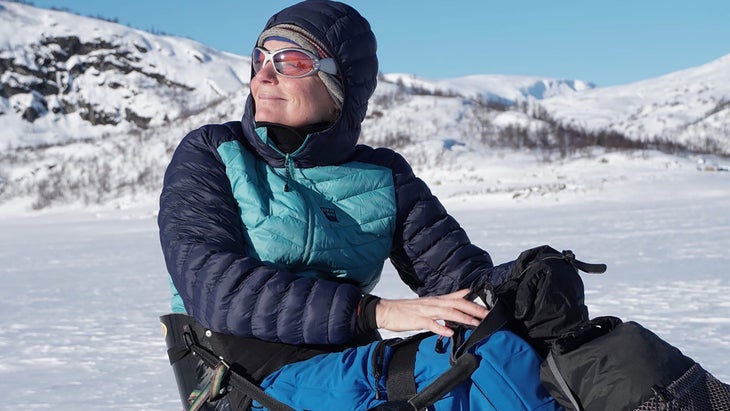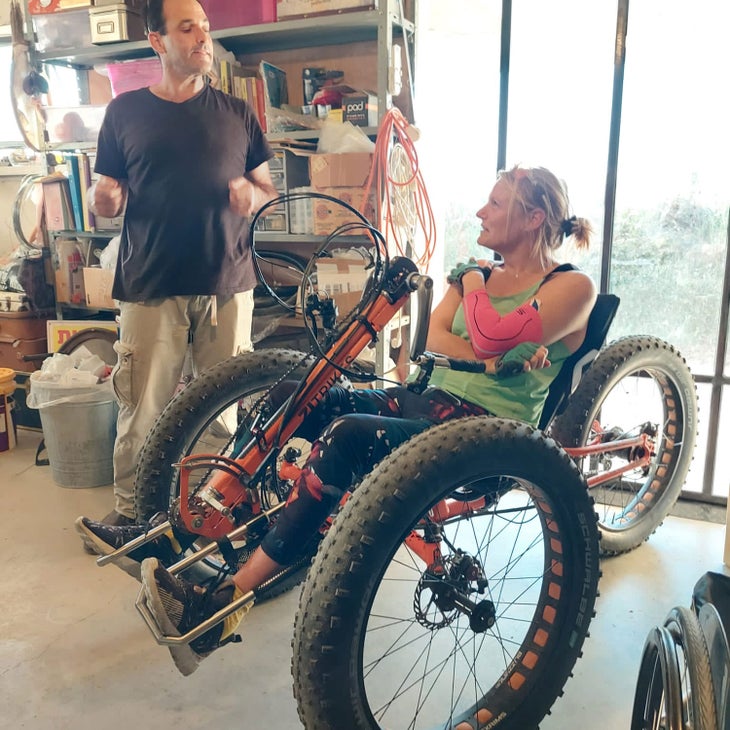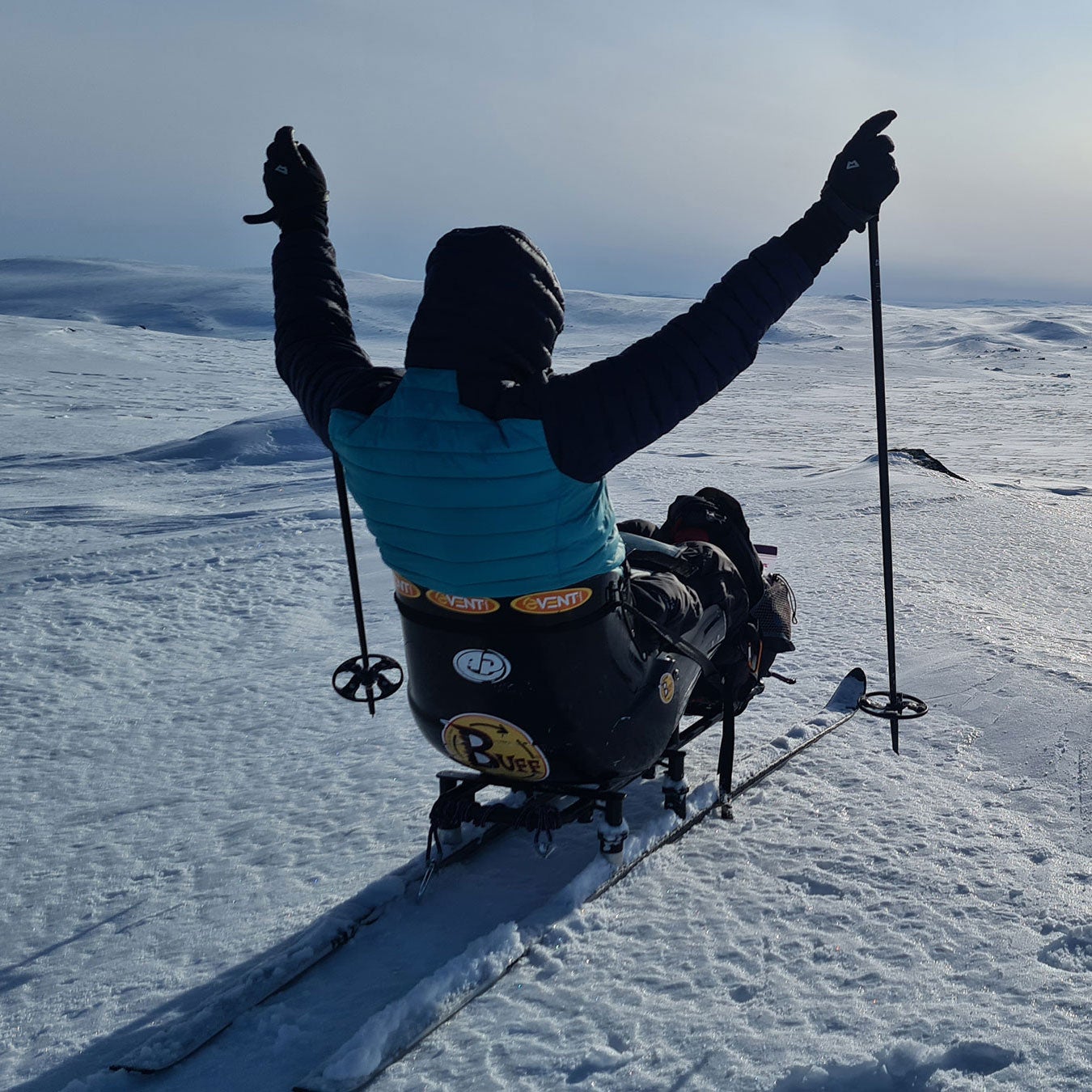Paralympic champion is confident that she will cross the Antarctic plateau before New Year’s Eve. She just doesn’t know how exactly she will do it.
Darke, who is paralyzed from the chest down, has two modality options: a custom-made recumbent hand bike and a cross-country sit ski. She will take both to Antarctica, but if the snow is too deep, she will have to leave the bike behind. Darke would rather use the hand bike, because the sit ski requires her to push herself forward a few inches at a time with ski poles.
“That way [the sit ski] is horrendous,” Darke told �����ԹϺ���. “Due to where I’m paralyzed, I’m reliant on small groups of muscles in my back and arms, and they get absolutely hammered by pole planting.”

The 51-year-old Brit and her three crew members plan to depart from Union Glacier Camp, a private campsite near the Hercules Inlet, in early December, and then cross 180 miles of rock and ice along the 79th meridian west. Antarctic adventurers often launch their respective expeditions in late November or early December to take advantage of warmer temperatures and longer spans of daylight. But the snow conditions are infamously finicky in the Antarctic summer. Windswept snow deposits called often dot the landscape, and navigating them on foot—let alone on a bike—is tricky.
If the sastrugi are too deep, the hand bike may become bogged down. Darke will bring the sit ski and bike to Union Glacier Camp and then try each out on the terrain before making her choice.
“Nobody knows what conditions will be like down there because they change every year,” Darke said. “We feel like we’re pushing the limits with the bike.”
Her ultimate goal is to reach the intersection of the 79th latitude and 79th longitude, a point on Antarctica that she is calling the “Pole of Possibility.” The spot is several hundred miles from the magnetic South Pole, and Darke has chosen it as her turnaround point because 79 is the atomic number of gold.
If she’s able to complete the trip by bike, Darke believes she will become the first person to travel across Antarctica by hand bike. If she sleds, Darke believes she will set the record for the longest Antarctic journey by a paraplegic. A handful of adventurers have pedaled across Antarctica, and in 2013 a British explorer named Maria Leijerstam to cycle from the coast of Antarctica to the South Pole. Darke believes she faces a greater challenge because she must use her arm muscles for propulsion.
Darke was paralyzed in a rock climbing accident in 1992 when she was 21, and in the ensuing years she committed herself to outdoor sports and adventure. In 2002 Darke paddled a sea kayak from Vancouver to Juneau, and in 2005 she hand biked from Kazakhstan to Pakistan. Darke joined the British Paracycling program in her thirties, and she won a silver medal at the 2012 Summer Paralympics and a gold in 2016. In recent years she has worked with hand cycle companies to help design bikes capable of breaking speed records and enduring extreme environments. In 2018 for hand biking by hitting 46.04 miles per hour in the Nevada desert.

Biking across Antarctica presented an altogether different technological challenge because of the deep snow and extreme cold. A decade ago, Darke first attempted to ride a hand bike in a polar environment during a trip to Norway, only to see the device fail spectacularly.
“It was a disaster—it sank into the snow and couldn’t get any traction,” she said.
Leijerstam rode from McMurdo Station to the South Pole on a recumbent tricycle specifically designed for polar riding made by a company called Inspired Cycle Engineering (ICE). But that bike was built for traditional foot pedals and not hand biking. Over the summer, Darke scored a breakthrough—an Israeli company called ZITrikes called her after to the chassis of an ICE bike.
In August Darke traveled to Israel to ride the custom rig. The frame has clearance for four-inch-wide tires, and it has an internal transmission that is geared to ascend steep inclines. It is also much taller than the recumbent hand cycles Darke is accustomed to riding.
“When I first saw it I was blown away by it—it felt like I was climbing into a tractor,” she said. “It’s not a fast bike. It’s like my version of slow walking. But the terrain you can access is mid blowing.”
For a month Darke piloted the bike in Israel, taking it into terrain that was previously too challenging for a hand bike, like sharp rocks and loose climbs. While pedaling along the Dead Sea she steered it onto a beach, and marveled at its ability to navigate the deep sand.
“Over the years your brain comes to understand what is and what is not possible on a hand bike,” she said. “I took it into terrain where my brain told me that it wouldn’t work, but it kept rolling. It was a real eye opener.”
Still, there is no guarantee that the ICE bike will overcome the snowdrifts, and so the sit ski will also make the journey. Darke said that completing her journey safely is more important than breaking records with technology, and so she’s already prepared to pivot from the bike to the sit ski. She already has a history with that apparatus as well. In 2007 she spent a month pushing herself across Greenland on a sit ski, one agonizing pole plant at a time.
“I love going into places that are hard to get to,” she said. “I suppose my circumstances mean that I always have to find unusual and crazy ways to get there.”


